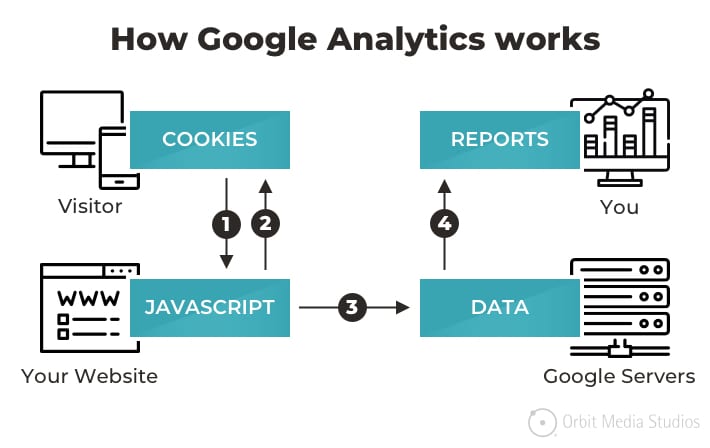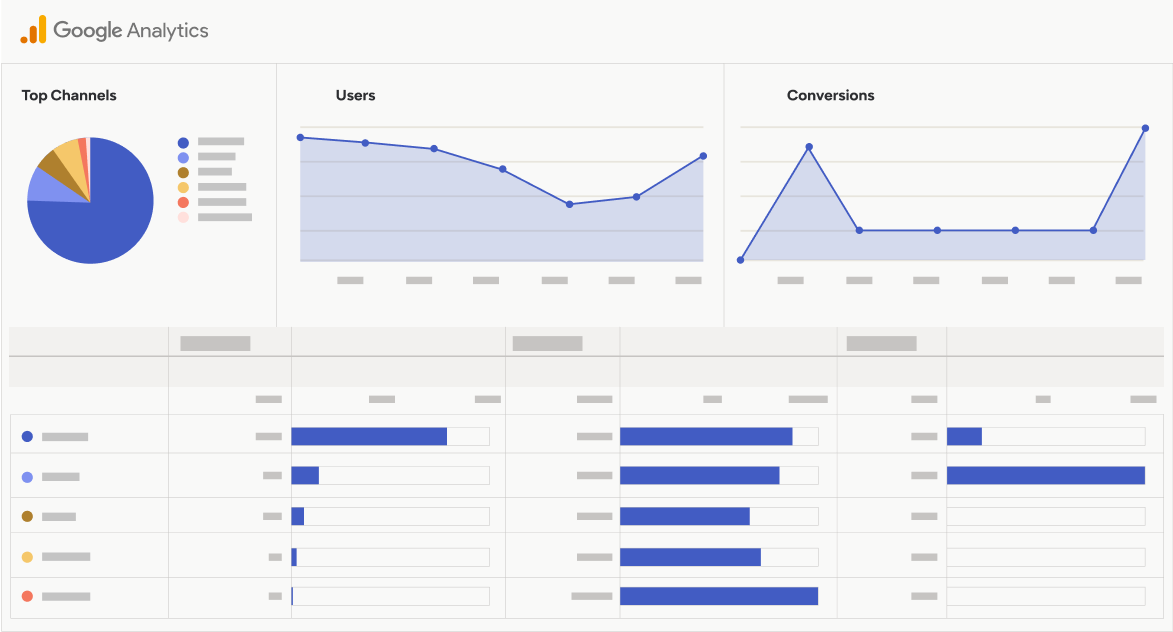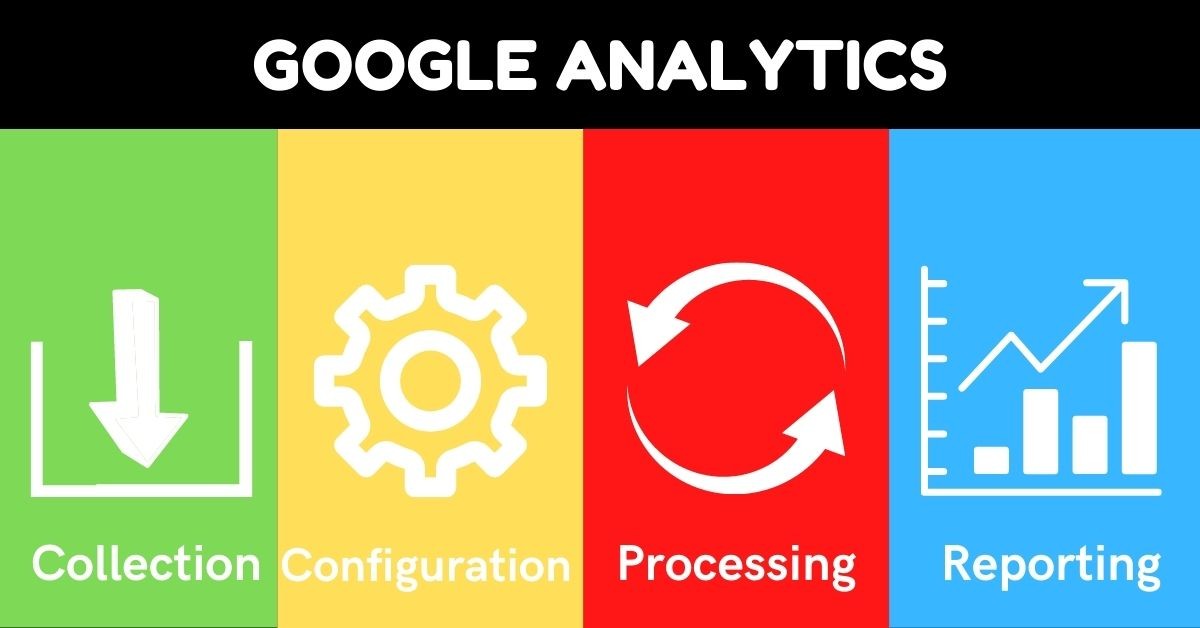Master Website Insights With Accurate Google Analytics Tracking Code
The effective usage of Google Analytics hinges on the exact implementation of its monitoring code, a basic action commonly ignored by website proprietors. This apparently straightforward JavaScript bit, when correctly placed, ends up being the foundation of information collection, offering understandings into individual actions and web site performance. However, challenges can develop during configuration, possibly skewing the data and leading to mistaken decisions. Comprehending these intricacies is crucial for taking full advantage of the benefits of analytics. What are the common risks that could threaten your tracking initiatives, and how can you make sure accuracy in your strategy?
Comprehending Google Analytics Essentials
Google Analytics is a necessary device for internet site owners and marketing professionals, providing indispensable insights right into user behavior and website performance. At its core, Google Analytics collects data regarding site visitors to a site, allowing customers to evaluate metrics such as traffic sources, user interaction, and conversion prices. Comprehending these fundamentals is essential for optimizing a website's performance and boosting customer experience.
The system employs cookies to track communications, tape-recording information such as page views, session durations, and bounce rates. This information is accumulated and provided via customizable dashboards, making it possible for individuals to visualize trends with time. Secret performance indications (KPIs) can be kept an eye on, such as the overall variety of customers, new versus returning visitors, and the geographical distribution of the audience.
In Addition, Google Analytics uses segmentation functions, allowing customers to isolate certain traffic resources or individual demographics for even more targeted analysis. By understanding these foundational components, site owners can make educated decisions regarding content technique, marketing campaigns, and general website renovations. Ultimately, recognizing Google Analytics basics is necessary for leveraging data to drive development and attain company objectives properly.
Establishing Your Tracking Code

Duplicate the offered monitoring code and paste it right into the HTML of your web site. Preferably, this code needs to be placed in the header section of every page you desire to track. This makes sure that the monitoring code lots before any type of other material, permitting it to catch data properly. If you are making use of a material monitoring system (CMS) like WordPress, there are plugins readily available that simplify the assimilation procedure.
After installment, verify that the tracking code is functioning correctly by utilizing Google Tag Aide or the Real-Time records in Google Analytics - when does the google analytics tracking code send an event hit to analytics?. This action is important to verify that your information collection is energetic and accurate, establishing the structure for insightful analysis
Usual Monitoring Code Issues
Numerous internet site proprietors encounter usual concerns with their Google Analytics tracking code that can hinder data collection and evaluation. One prevalent problem is improper installation. This might happen when the tracking code is positioned in the incorrect section of the internet site's HTML, frequently resulting in missing or insufficient information. In addition, having multiple circumstances of the tracking code on a solitary web page can lead to filled with air metrics, as customer communications may be counted extra than as soon as.
One more issue arises from making use of ad blockers, which can stop the monitoring code from performing altogether, therefore skewing information. when does the google analytics tracking code send an event hit to analytics?. In addition, failure to set up filters correctly can cause the exemption of necessary web traffic resources or the inclusion of unwanted recommendation spam, distorting the information accumulated
Internet site proprietors might likewise ignore the value of monitoring code updates, particularly when migrating to Google Analytics 4 (GA4) from Universal Analytics. Lastly, insufficient testing before introducing changes can cause undetected errors in the tracking official site code, better complicating data integrity. Attending to these typical concerns is vital for making sure accurate monitoring and insightful analytics.
Analyzing Site Information Properly
Exact information collection is only the primary step in leveraging Google Analytics; the genuine value lies in efficiently analyzing that data to drive informed decision-making. To achieve this, it is crucial to recognize vital efficiency indicators (KPIs) that align with your service goals. Concentrate on metrics such as conversion rates, user interaction, and web traffic resources, as these will certainly provide understandings right into customer behavior and the total effectiveness of your web site.
Using Google Analytics' segmentation functions enables for a much deeper understanding of your target market. By breaking down data into specific demographics, actions, and web traffic networks, you can discover patterns and patterns that inform targeted techniques. Carrying out personalized reports and dashboards can streamline this procedure, making it possible for fast accessibility to essential information.
Furthermore, regularly examining data trends in time assists to recognize abnormalities and possibilities for improvement. Utilize visualization devices to existing information in a conveniently absorbable layout, promoting extra efficient communication with stakeholders. Ultimately, the ability to assess web site information effectively equips services to make strategic decisions that improve individual experience, enhance marketing efforts, and drive growth.

Finest Practices for Accurate Tracking
Executing efficient tracking methods is essential for getting dependable information in Google Analytics. To make sure accurate tracking, begin by appropriately setting up the Google Analytics tracking code on every page of your internet site. This can be completed with a tag supervisor or by directly installing the code into the HTML.
Following, configure your Google Analytics account to exclude interior web traffic. This can be done by establishing up filters that identify and get rid of visits from your company's IP address, thus stopping manipulated data. Furthermore, use occasion monitoring to monitor specific customer communications, such as downloads or video plays, which standard web page views may overlook.
On a regular basis audit your monitoring configuration to verify that all functions, such as objectives and ecommerce monitoring, are functioning appropriately. Establish a consistent naming convention for your events and campaigns to promote much easier coverage and evaluation.
Lastly, consider leveraging UTM criteria for projects to obtain understandings right into the Recommended Reading efficiency of different advertising initiatives. By adhering to these finest techniques, you can enhance the accuracy of your information collection and evaluation, eventually leading to even more enlightened decision-making for your internet site.
Conclusion
Precise application of the Google Analytics tracking code is necessary for grasping site understandings. By making certain the monitoring code is properly put and consistently investigated, internet site owners can record important customer interaction information, hence facilitating the identification of crucial efficiency signs. Effective analysis of this data, incorporated with adherence to best methods, enables educated decision-making and the optimization of on-line discover this methods. Eventually, a robust tracking framework enhances the capacity to drive involvement and boost general site performance.

Not enough screening prior to introducing modifications can result in undiscovered errors in the tracking code, even more complicating information integrity.Applying efficient tracking practices is essential for acquiring trusted information in Google Analytics. By making sure the tracking code is appropriately positioned and regularly examined, site owners can record vital customer interaction data, thus helping with the recognition of key efficiency indicators.